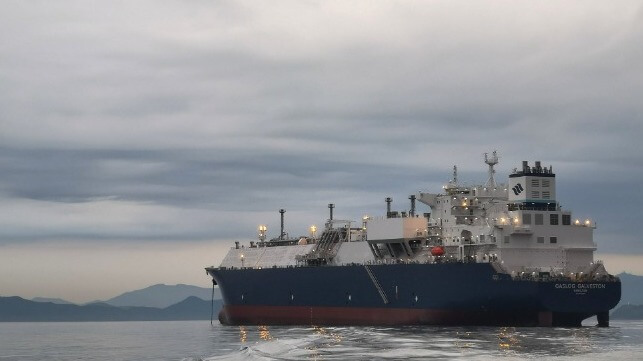Study: Generators Can Be a Major Source of Methane Slip on LNG Vessels

A team led by researchers at Queen Mary University of London has completed the first ever comprehensive study of methane emissions from an LNG carrier under way, and the findings are unexpected. The largest source of methane escaping from the ship was not from venting cargo, nor from the main engines, but from the generators.
With support from Cheniere Energy and GasLog, a team led by QMUL chemical engineering researcher Dr. Paul Balcombe installed sensors aboard the brand-new LNG carrier GasLog Galveston. They collected data and monitored all potential sources of emissions over the course of a voyage from Corpus Christi to Zeebrugge and back.
The results were surprising. Venting and fugitive emissions from the cargo equipment were negligible, and CO2 emissions were lower than expected - likely due to improvements in engine technology and ship design. However, methane slip was considerable, amounting to 3.8 percent of the LNG fuel burn.
Previous analyses have centered on methane emissions from the main engines, without much consideration to the generator sets, and the data suggests that this may be an oversight. The Galveston's four four-stroke generators were the main source of methane slip on board, and were particularly prone to high emissions at low load.
Over the span of the round-trip voyage, the Galveston emitted about 4,600 tonnes of CO2 and 68 tonnes of methane (0.04 percent of the cargo). The methane releases add up to another 3-6,000 tonnes of CO2-equivalent emissions, depending on the time horizon (methane slowly degrades and is most potent early on).
Methane slip from the engines and generators accounted for 99 percent of the methane emissions measured on board. The slip from the low-pressure two-stroke main engines came to a modest two percent, but the generators were releasing about eight percent of their fuel to the atmosphere - and up to 16 percent for the Number Four generator. Though the generators were far smaller than the mains, they were the source of the majority of methane emissions on board.
Slip from the generators varied markedly with load factor, and on this voyage, the crew was operating two generators at a time on 40 percent load. The authors noted that based on the observed data, slip from the generators would be cut in half by running at 80 percent load, if safety and operational requirements allowed.

that matters most
Get the latest maritime news delivered to your inbox daily.
Notably, the measured methane emissions intensity aboard the Galveston was far higher than that used in a prominent industry-backed study carried out by consultancy Thinkstep in 2019 - resulting in far higher warming potential on a short-term timescale, when methane has the most effect. The Thinkstep study (like all previous studies) omitted a detailed model of generator emissions, and it assumed "negligible methane slip rates" from the ship's engines overall, the authors noted.
"This study is the first-of-a-kind to measure total methane emissions from engines aboard LNG carriers, including venting and fugitive emissions, but we need to do much more to get a representative sample of the approximately 600-strong LNG fleet," said Dr. Balcombe in a statement. "As well as these academic measurement studies, increased monitoring of emissions from engines, vents and fugitives would allow us to identify and implement effective reduction measures as hotspots are found."
